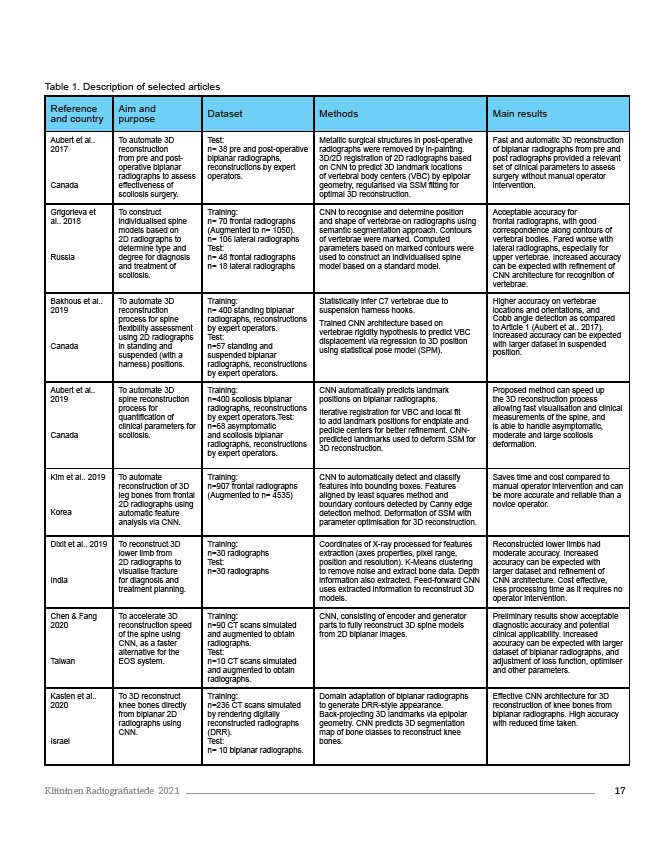
Table 1. Description of selected articles
Reference
and country
Aim and
purpose Dataset Methods Main results
Aubert et al..
2017
Canada
To automate 3D
reconstruction
from pre and post-
operative biplanar
radiographs to assess
effectiveness of
scoliosis surgery.
Test:
n= 38 pre and post-operative
biplanar radiographs,
reconstructions by expert
operators.
Metallic surgical structures in post-operative
radiographs were removed by in-painting.
3D/2D registration of 2D radiographs based
on CNN to predict 3D landmark locations
of vertebral body centers (VBC) by epipolar
geometry, regularised via SSM fitting for
optimal 3D reconstruction.
Fast and automatic 3D reconstruction
of biplanar radiographs from pre and
post radiographs provided a relevant
set of clinical parameters to assess
surgery without manual operator
intervention.
Grigorieva et
al.. 2018
Russia
To construct
individualised spine
models based on
2D radiographs to
determine type and
degree for diagnosis
and treatment of
scoliosis.
Training:
n= 70 frontal radiographs
(Augmented to n= 1050).
n= 106 lateral radiographs
Test:
n= 48 frontal radiographs
n= 18 lateral radiographs
CNN to recognise and determine position
and shape of vertebrae on radiographs using
semantic segmentation approach. Contours
of vertebrae were marked. Computed
parameters based on marked contours were
used to construct an individualised spine
model based on a standard model.
Acceptable accuracy for
frontal radiographs, with good
correspondence along contours of
vertebral bodies. Fared worse with
lateral radiographs, especially for
upper vertebrae. Increased accuracy
can be expected with refinement of
CNN architecture for recognition of
vertebrae.
Bakhous et al..
2019
Canada
To automate 3D
reconstruction
process for spine
flexibility assessment
using 2D radiographs
in standing and
suspended (with a
harness) positions.
Training:
n= 400 standing biplanar
radiographs, reconstructions
by expert operators.
Test:
n=57 standing and
suspended biplanar
radiographs, reconstructions
by expert operators.
Statistically infer C7 vertebrae due to
suspension harness hooks.
Trained CNN architecture based on
vertebrae rigidity hypothesis to predict VBC
displacement via regression to 3D position
using statistical pose model (SPM).
Higher accuracy on vertebrae
locations and orientations, and
Cobb angle detection as compared
to Article 1 (Aubert et al.. 2017).
Increased accuracy can be expected
with larger dataset in suspended
position.
Aubert et al..
2019
Canada
To automate 3D
spine reconstruction
process for
quantification of
clinical parameters for
scoliosis.
Training:
n=400 scoliosis biplanar
radiographs, reconstructions
by expert operators.Test:
n=68 asymptomatic
and scoliosis biplanar
radiographs, reconstructions
by expert operators.
CNN automatically predicts landmark
positions on biplanar radiographs.
Iterative registration for VBC and local fit
to add landmark positions for endplate and
pedicle centers for better refinement. CNN-predicted
landmarks used to deform SSM for
3D reconstruction.
Proposed method can speed up
the 3D reconstruction process
allowing fast visualisation and clinical
measurements of the spine, and
is able to handle asymptomatic,
moderate and large scoliosis
deformation.
Kim et al.. 2019
Korea
To automate
reconstruction of 3D
leg bones from frontal
2D radiographs using
automatic feature
analysis via CNN.
Training:
n=907 frontal radiographs
(Augmented to n= 4535)
CNN to automatically detect and classify
features into bounding boxes. Features
aligned by least squares method and
boundary contours detected by Canny edge
detection method. Deformation of SSM with
parameter optimisation for 3D reconstruction.
Saves time and cost compared to
manual operator intervention and can
be more accurate and reliable than a
novice operator.
Dixit et al.. 2019
India
To reconstruct 3D
lower limb from
2D radiographs to
visualise fracture
for diagnosis and
treatment planning.
Training:
n=30 radiographs
Test:
n=30 radiographs
Coordinates of X-ray processed for features
extraction (axes properties, pixel range,
position and resolution). K-Means clustering
to remove noise and extract bone data. Depth
information also extracted. Feed-forward CNN
uses extracted information to reconstruct 3D
models.
Reconstructed lower limbs had
moderate accuracy. Increased
accuracy can be expected with
larger dataset and refinement of
CNN architecture. Cost effective,
less processing time as it requires no
operator intervention.
Chen & Fang
2020
Taiwan
To accelerate 3D
reconstruction speed
of the spine using
CNN, as a faster
alternative for the
EOS system.
Training:
n=90 CT scans simulated
and augmented to obtain
radiographs.
Test:
n=10 CT scans simulated
and augmented to obtain
radiographs.
CNN, consisting of encoder and generator
parts to fully reconstruct 3D spine models
from 2D biplanar images.
Preliminary results show acceptable
diagnostic accuracy and potential
clinical applicability. Increased
accuracy can be expected with larger
dataset of biplanar radiographs, and
adjustment of loss function, optimiser
and other parameters.
Kasten et al..
2020
Israel
To 3D reconstruct
knee bones directly
from biplanar 2D
radiographs using
CNN.
Training:
n=236 CT scans simulated
by rendering digitally
reconstructed radiographs
(DRR).
Test:
n= 10 biplanar radiographs.
Domain adaptation of biplanar radiographs
to generate DRR-style appearance.
Back-projecting 3D landmarks via epipolar
geometry. CNN predicts 3D segmentation
map of bone classes to reconstruct knee
bones.
Effective CNN architecture for 3D
reconstruction of knee bones from
biplanar radiographs. High accuracy
with reduced time taken.
Kliininen Radiografiatiede 2021 17